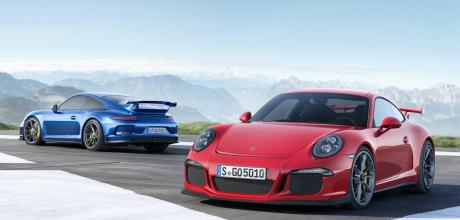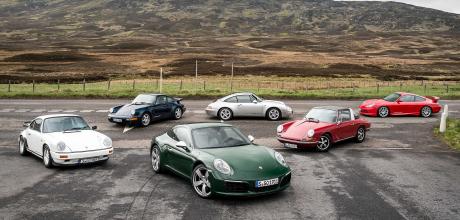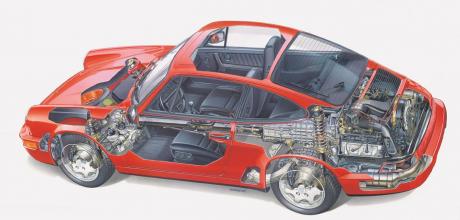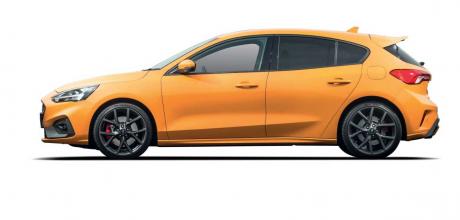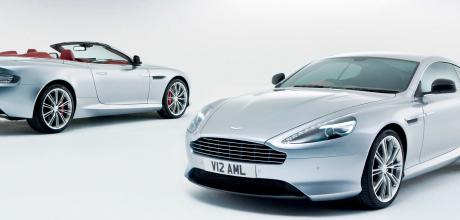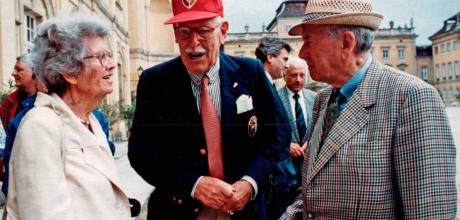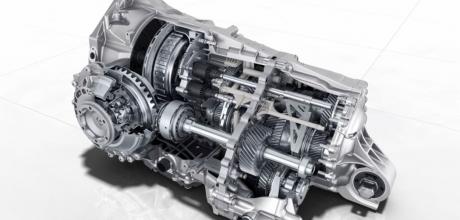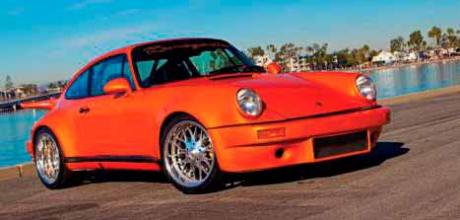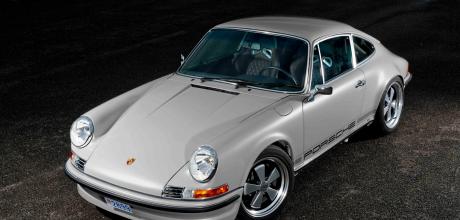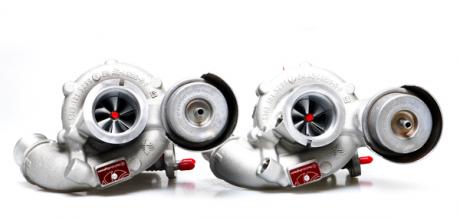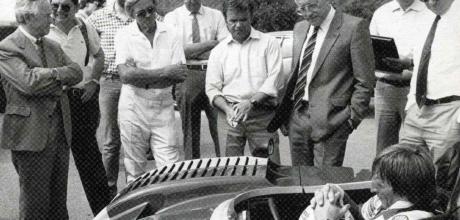Porsche 911 997 → Porsche’s ace test specialist Walter Röhrl (right), but board member for R&D, Wolfgang Hatz
With its combination of electric and petrol V8 traction, the 887hp 918 hypercar was the most powerful Porsche yet. It also had the longest introduction of any Porsche, because the company was determined to get this complex car right first time. A measure of this concern is visible in the photograph.
Porsche 911 991 → Technology explained – Porsche 911 Turbo, but what is the overboost function – and does it work?
We know it’s exclusive to the 911 Turbo, but what is the overboost function – and does it work? Extra performance is something we all may crave occasionally for our 911. Since 2004, Neunelfer Turbos have had this exact capability in the overboost feature. But what is it? To understand overboost, we need to consider the engine, because overboost is only possible on a turbocharged motor. The turbocharger supplies additional clean air, under pressure, into the engine to generate more power.
Looking at the lineage of GT3 production, one model stands out: the 991.1 variant. Of all the iterations, the 991.1 is the only one that wasn’t available with a manual gearbox. Does that make a difference to how the market views it, compared to its peers? Philip Raby of Philip Raby Specialist Cars suggests that it doesn’t. “Most people are happy with the idea of PDK now, and accept it. There’s a good market for PDK GT3s, but if you really wanted a manual, you’d probably just buy a Gen2 version.
Philip Raby, of Philip Raby Specialist Cars, points out it can be hard to identify trends, but he notes a definite run on 993s of late. Unusually, he’d had four in, and had so many enquires that he could have sold them again and again. “People were almost fighting over them,” he says. Avi Tandon of Garage Sportique backs that up, noting demand for 964s and 993s. “90s air-cooled cars, particularly manual C2 Coupes, are in demand, but finding those with low mileage is quite tricky,” he says.
All-wheel-drive has been a part of the 911’s repertoire since the 964 of 1988. Total 911 explains how the first AWD system worked. Four-wheel-drive has been with the 911 for over 30 years now, but the idea was tested by Ferdinand Porsche in the 1947 Type 360/Cisitalia. That used an all-wheel-drivetrain to meter the power from a supercharged 12-cylinder engine, but the idea had been set in motion from the off.
You may have noticed a bit of a theme with this series. It usually celebrates a car that was once good, great or merely interesting but which tended to hang around a bit too long, by which point customers become interested in something newer and shinier. That’s not the case with the just-axed Ford Focus ST. Recently departed performance title MOTOR gave the hot Ford hatch a runner-up position at this year’s Sports Car of the Year award.
The first Aston Martin of the modern Gaydon era but now verging on classic status, the DB9 is a tempting sports GT for not too much money. Here’s how to buy one.
The 30th anniversary of the 911 was its first real landmark and the car was feted in Stuttgart with due ceremony. Its 25th had passed almost unnoticed, but given the uncertainty and managerial turmoil at Zuffenhausen in autumn 1988, few would have been in the mood. Total 911 recounts the story behind a famous picture from Porsche’s past… Five years on, however, the outlook was improving.
Porsche Doppelkupplungsgetriebe has outsold them manual gearbox in 911s for the past 10 years… The use of automatic gearboxes in cars predates Porsche by almost 50 years – an unkind person might say that many automatic gearboxes drove like they did. Not so with Porsche’s Doppelkupplingsgetriebe, or PDK for short.
Porsche 911 993 → Sales debate - is demand for modified Porsche 911s high, or does originality rule?
There are seemingly endless models and factory options to choose from along the timeline of 911 production. Yet that variety only just begins on the dealer spec list. What of cars that have been altered over the years since they left the showroom? From rat rods to restomods, ‘Big Reds’ to RSR wings… you name it, someone will have done it over 50 years of fashions. Is there a market for a modified 911 today, or is originality best? Paragon sales manager Jamie Tyler says yes and no.
There was once, believe it or not, a time when early 911s were forgotten, underappreciated and, well, almost apologised for, as just old Porsches. Water cooling came in and – for a while – the peculiarities of the earliest 911s were seen as negatives. Today is a different time, and those early long-bonnet models have become hot Porsche property over the last seven or eight years, with values skyrocketing almost overnight. But prices have softened lately; is their appeal on the wane?
The Turbo moniker is well established with the 911. But what is a turbo, and why are they used? Technology explainedAn engine needs two ingredients to run: fuel and air. In sports cars such as the 911 where performance is the ultimate focus, you’d expect to simply turn up the wick to increase fuel, and hey presto, instant performance, right? Wrong. The combination of air and fuel is set to a fine balance, the so-called stoichiometric mixture of 14.7:1.
Porsche engineering top brass was not as might be expected at Le Mans or any other major race, but a
This gathering of Porsche engineering top brass was not as might be expected at Le Mans or any other major race, but a purely internal get-together. The venue is the Weissach test track on a summer morning in 1984 and the initiative came from Helmuth Bott who was keen to settle an argument about whether Porsche’s current Group C car, the 956, was as fast as the 917/30 Turbo of the previous decade.





